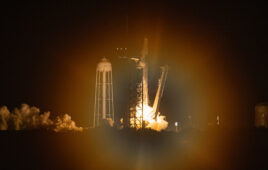 Last Halloween, an asteroid the size of a football stadium blasted past Earth. While it came no closer than 300,000 miles, the approach could serve as a reminder of Earth’s fragility in the face of potentially hazardous near-Earth objects (NEOs).
Last Halloween, an asteroid the size of a football stadium blasted past Earth. While it came no closer than 300,000 miles, the approach could serve as a reminder of Earth’s fragility in the face of potentially hazardous near-Earth objects (NEOs).
Though all known potentially hazardous asteroids have about a 0.01% chance of hitting the Earth in the next 100 years, NASA is remaining vigilant. The agency recently established the Planetary Defense Coordination Office, which will lead all NASA-funded efforts on NEOs, and lead intergovernmental efforts to mitigate potential threats.
“The formal establishment of the Planetary Defense Coordination Office makes it evident that the agency is committed to perform a leadership role in national and international efforts to detection of these natural impact hazards, and to be engaged in planning if there is a need for planetary defense,” said NASA’s Planetary Defense Officer Lindley Johnson.
Each year, NASA detects around 1,500 new NEOs. In total, more than 13,500 NEOs have been discovered to date, with 95% of those being discovered since NASA-funded surveys began in 1998.
The Planetary Defense Coordination Office, besides tracking hazardous NEOs, will issue warnings regarding close flybys and potential impacts. If an impact is imminent, the office will work closely with the Federal Emergency Management Agency (FEMA), the Dept. of Defense, and other agencies to coordinate response efforts.
Ground-based telescopes help NASA detect NEOs, but the agency also uses the space-based NEOWISE infrared telescope. After detection, the NEOs’ orbits are predicted and monitored by NASA’s Jet Propulsion Laboratory. Certain NEOs are characterized further by various NASA instruments.
NASA is currently focusing on detecting NEOs around 450 ft and larger. In 2005, the agency took up the task of detecting 90% of these objects by 2020. Thus far, an estimated 25% of these objects have been detected, according to NASA.
Long-term goals for planetary defense include developing technology capable of deflecting and redirecting NEOs on a collision course with Earth.
In NASA’s 2016 fiscal year budget included $50 million for NEO observations and planetary defense.




